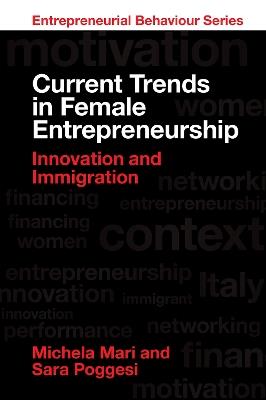
Current trends in female entrepreneurship: innovation and immigration
The aim of this book is to go beyond the classical narrative associated with women entrepreneurs, contributing to the above-mentioned need especially by shedding light on two important and, for some aspects, also interconnected categories of women entrepreneurs: innovative women entrepreneurs and immigrant ones. The interest towards such peculiar entrepreneurs has increased over the years and worldwide for different reasons. Regarding innovative women entrepreneurs, policy makers do agree on the socio-economic relevance of such entrepreneurs as they contribute to the economic and social growth of a country and can act as mentors for younger girls. However, also in this case, there are few studies to date on the intertwinement among innovation, gender and entrepreneurship in management studies. Therefore, in the first two chapters of this book, the authors aim at investigating the peculiarities of such entrepreneurs, both theoretically and empirically, also by comparing their experience with that of traditional ones. Beside the theoretical analysis, an empirical investigation, grounded on Italy, is conducted. Italy, classified by the European Commission as a ‘moderate innovator’ country (2023a), has been chosen as it is characterised by a huge number of small- and mediumsized enterprises (SMEs), by the lowest European women employment rate (Eurostat, 2023) but also by the highest levels of self-employment for women in Europe (Encinas-Martín & Cherian, 2023). Specifically, the experience of Italian innovative women entrepreneurs is analysed. Then, regarding immigrant women entrepreneurs, policy makers agree on the socio-economic relevance of entrepreneurship for these women as a pathway towards employment, empowerment and gender equality; however, there is still much to learn about how to mobilise such forces. Therefore, this section of this book aims at shedding light on the characteristics of these entrepreneurs, their motivations and the obstacles they had to overcome in order to establish their own business activity and, above all, the peculiarities of their firms. Besides the theoretical analysis, an empirical investigation, grounded on Italy, is conducted. Italy has been chosen as it is the first European country for self-employment, the third for the number of foreign workers and the second country of EU-28 for non-EU self-employed workers and the fourth for EU citizens (IDOS, 2023), and in this section, data on the Polish women entrepreneurs are presented.


